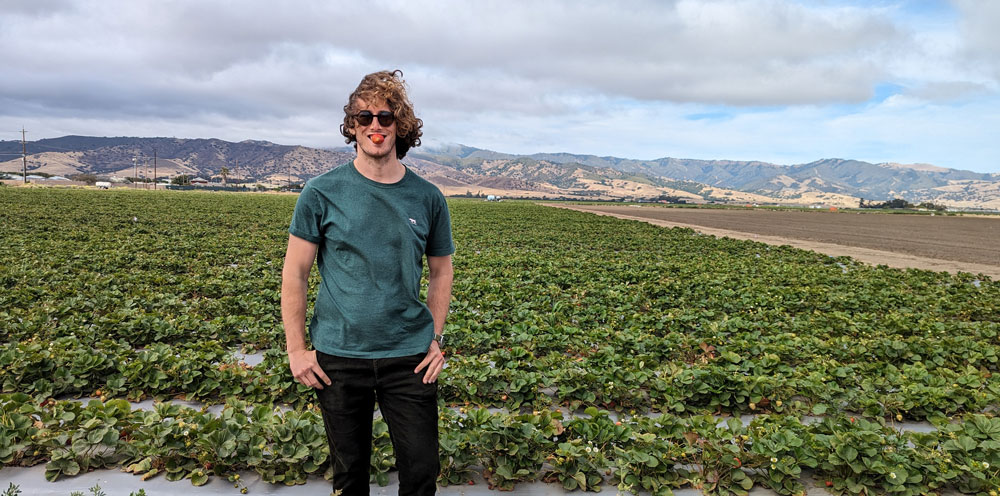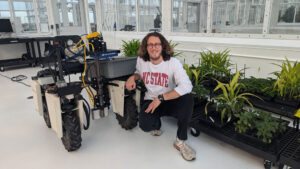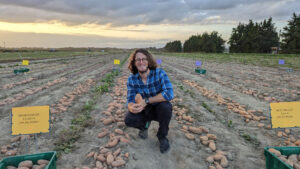Back to the Farming Future

Dr Wesley Moss, 2022 Fulbright Future Scholar, Funded by The Kinghorn Foundation
Advances in technology, particularly Artificial Intelligence, are poised to transform numerous sectors of our world. In the case of agriculture these advancement have the potential to allow us to progress while also facilitating a return to farming methods of the past. Prior to the industrial revolution, around 90% of people in a country like the US would be living on farms or working in agriculture.
Fast forward to today and this is only around 1%. This has resulted in a massive loss of human intelligence on farms; it’s not that farmers were more intelligent in the 1800’s, it’s just that we had a lot more eyes on the ground. As these numbers of farm workers decreased, they were replaced with large-scale machinery that homogenized and simplified management across a field. In the past, farmers were able to make management decisions at very fine scales e.g. hand weeding was common even on large fields, where attention was given to weedier areas. However, the resolution of decision making decreased to where entire fields are treated the same.
Excitingly, this may be about to change as advancements in Machine Vision systems are opening up a new paradigm in “precision agriculture” that allow fields to be scanned and understood in much greater detail, allowing decisions to be made on a per plant basis rather than a per acre basis.

I was fortunate to complete a Fulbright Program in 2023 where, as a visiting researcher from Australia, I worked with leading public sector scientists in the USA. I worked with the Precision Sustainable Agriculture (PSA) group collaborating with North Carolina State University and the USDA Agricultural Research Service. An outcome of this work was the development of a prototype precision herbicide application platform. This system is capable of driving through a field; using a camera and Machine Vision algorithm to identify weeds; and then spraying the weeds very precisely with herbicide to kill them.
This system is intended to target weeds that are very close to the crop plant and as such is very precise, being able to hit targets within mm accuracy in order only hit the weed and not the crop. The weed is dosed with only a tiny amount of herbicide, around 1 millionth of the litre, but even though this is such a small dose it is able to kill the weed because it is highly concentrated and applied directly to the plant. Only applying these microvolume doses to the weeds and not uniformingly spraying the whole field can significantly reduce herbicide usage – estimated up to 95% reduction In herbicide.

On returning to Australia, I will continue to collaborate with US colleagues and leverage skills and resources from Australia and America to progress this research. Given the global nature of the problems facing agriculture, this Fulbright program was a fantastic experience to further build international collaborations on this project. The protype system developed during my Fulbright is part of a range of exciting research being conducted around the world, as researchers and companies seek to utilise advancements in technology to make farming more precise.
This has the potential to return to an era of farming where decisions are made on a per plant basis and generate huge increases in efficiency. This is needed as worldwide agriculture looks to increase output to feed a growing population, while reducing environment impacts.
Copyright © 2021 – Fulbright


 Facebook
Facebook Twitter
Twitter Linkedin
Linkedin Instagram
Instagram